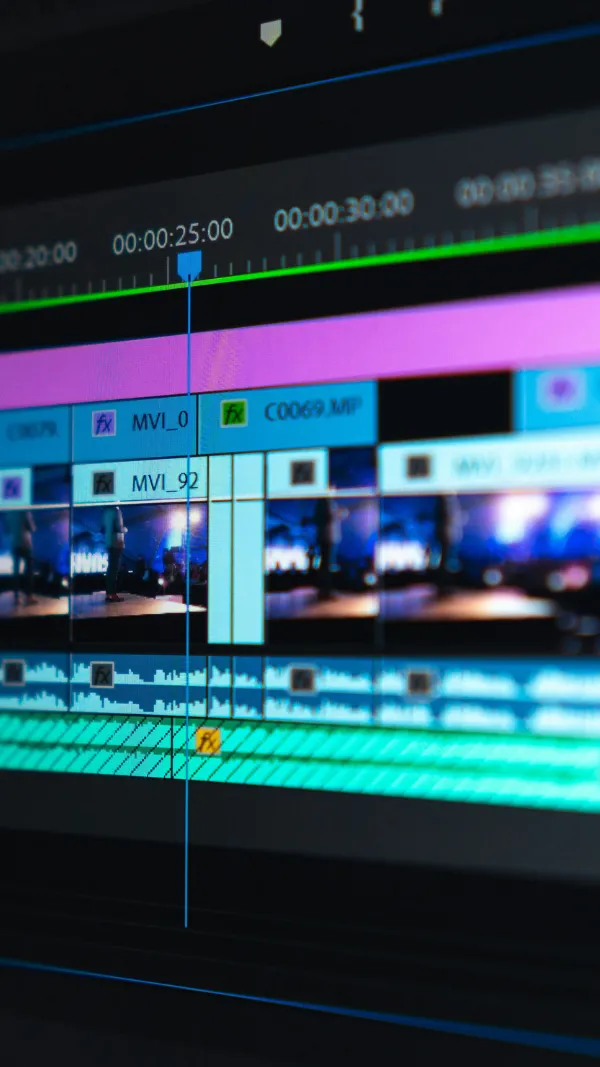Too long, too short, or just right?
Choosing the right length for your brand video
If there is anything marketers love to throw around, it’s the length of their advertising videos. How about a 6 second, a 15 second, a 30 second, and – why not – a 90 second while we’re at it?
There are important factors to consider with each of these, as the cost (in both time and money) of producing multiple videos at various lengths can ramp up very quickly. It is critical to balance the requirements of a media plan with the availability of footage to satisfy various lengths, key messages, and most importantly, the desires of your audience. Of course, staying on budget is always an important consideration, too.
In this article, we’ll explore some common video lengths found in media plans, as well as typical creative and media considerations to get you started on figuring out what’s right for your marketing strategy.
6-second videos
Driven by the fact that YouTube allows skipping after 5 seconds of pre roll video, 6-second videos effectively force us to get our entire message into the ad and in front of our audience before they have the opportunity to skip.
These can also be served as bumper ads, where the entire 6-second ad is played before the audience can skip, and often work best when they deliver a single, punchy message or reinforce a key brand element.
6 seconds is such a short amount of time that calling these a “video” can sometimes even be a bit of a stretch. At Origin, we like to call these “moving ads,” as there is really the opportunity for only one key message. They can be very effective, but you often need a suite of them in order to communicate multiple messages effectively.
15-second videos
A 15-second video is often seen as the sweet spot for advertising - and probably what we make the most of at Origin. They’re short enough to capture attention, and long enough to contain key messages and visuals that make it feel complete. This format performs well across social, digital, and TV placements, and is particularly effective when there’s a single call to action.
Where 15 second videos become challenging is when you try to build a story arc or cut down any form of significant video to fit. By the time you incorporate an intro, key message, and endplate, you don’t have a ton of time to get a more in-depth message across.
30-second videos
30-second videos are a bit of a legacy length from the broadcast TV era, but they still hold strong, especially in connected TV and YouTube in-stream placements. They give brands time to establish context, show product usage, and communicate a more complete story—but they also need to work harder to keep attention. Therefore, it’s particularly important that they have a strong “hook” at the outset of the video, and that viewers leave feeling as if they’ve seen something worthwhile. Which is to say, please don’t underestimate the amount of creative thinking and planning necessary to create a compelling 30-second video.
60-90 second videos
Some may argue that these days a 60- to 90-second video qualifies as "long-form," but there’s still a time and place for it within digital advertising. These longer formats are best when you have a compelling story to tell—something emotional, informative, or entertaining that rewards a viewer for sticking with it. Think brand storytelling, customer testimonials, or explainer content that lives on your site, YouTube channel, or even in paid campaigns with strong targeting. As with 30-second videos, these longer formats demand a significant investment in creative thinking to ensure you’re making the most of your resources, not to mention your brand’s story.
Before diving into determining what video lengths you’ll need, here are a few additional things to think about:
What is required from your media plan? Start with balancing your key messages, placements, and audience before leading with length.
Shorter isn't always cheaper. It can be harder (and more expensive) to distill your message down to 6 or 15 seconds than it is to let it breathe in a longer cut. The cost of editing isn’t measured by seconds of finished product - two 15s are likely going to cost you more than one 30.
Not every video needs to stand alone. A good video strategy often includes lengths that link back to the same creative idea. When paired with an effective media strategy, we can hit our audiences
Performance matters. Look at completion rates, view-through rates, and engagement to help guide future decisions that might be right for your brand
Aspect ratios. This is often an afterthought, and a “resize” is often not a simple task, especially when you are going from 16x9 to 9x16. You probably don’t need every size for every video, but it’s important to think about which messages will be best suited for which channel and what aspect ratios will be strongest in those placements.
Availability of footage. How much quality footage that matches your brand do you have available? If you have 38 seconds of A-grade footage, it would be better to distill this down to an effective 30-second spot as opposed to trying to squeeze in an additional 22 seconds of B-grade footage… or worse.
A solid video advertising strategy. No matter what lengths you’re working with – will balance media insights and best practices with best-in-class creative and effective messaging. Leaning too far in either direction could end up costing you more money or resulting in ineffective creative. And none of us want that.



